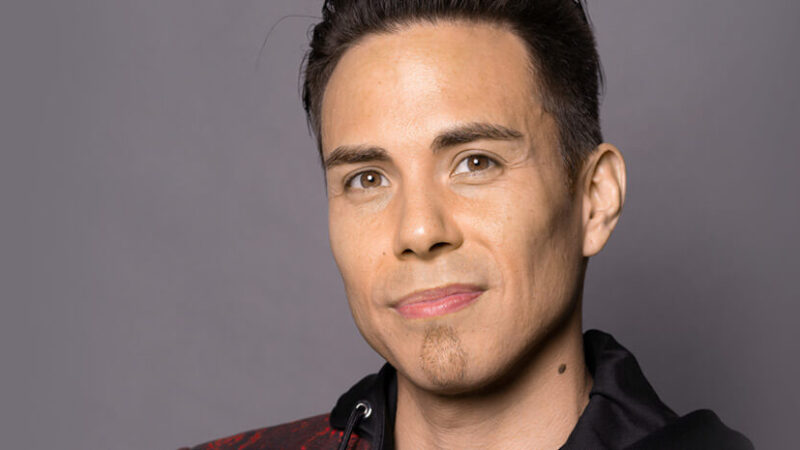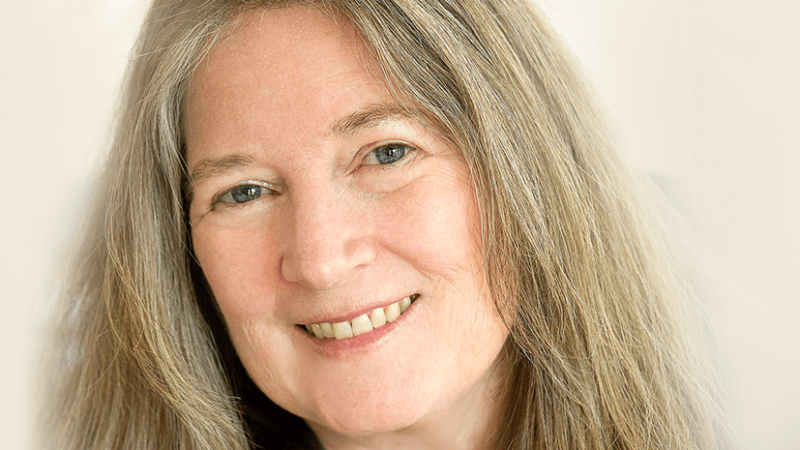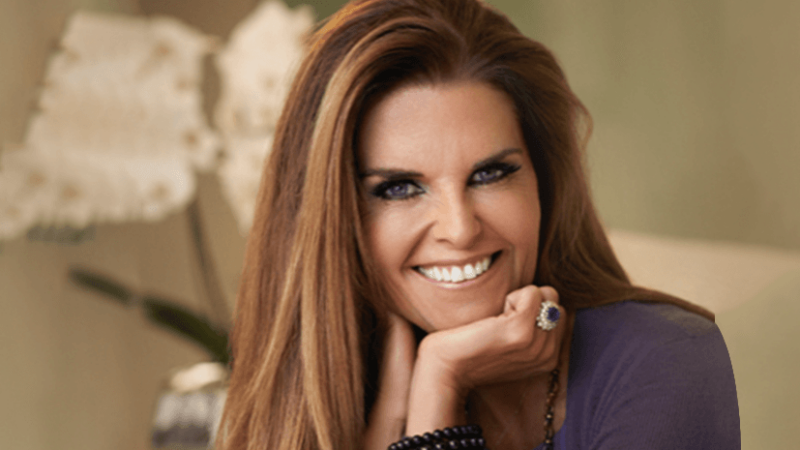-
E117: The Real Work: Letting Go from Within
Michael Singer — October 2, 2025
True spirituality isn’t about mystical experiences or lofty ideals—it’s about honestly facing...
-
Once More: Reflections on Reincarnation and the Gap Between Lives
Tami Simon — September 26, 2025
In this special reflection episode of Insights at the Edge host Tami Simon looks back on her...
-
Honey Tasting Meditation: Build Your Relationship with Sweetness
There is a saying that goes “hurt people hurt people.” I believe this to be true. We have been...
Written by:
Amy Burtaine, Michelle Cassandra Johnson
-
Many Voices, One Journey
The Sounds True Blog
Insights, reflections, and practices from Sounds True teachers, authors, staff, and more. Have a look—to find some inspiration and wisdom for uplifting your day.
Standing Together, and Stepping Up
Written By:
Tami Simon -
The Michael Singer Podcast
Your Highest Intention: Self-Realization
Michael Singer discusses intention—"perhaps the deepest thing we can talk about"—and the path to self-realization.
This Week:
E116: Doing the Best You Can: The Path to Liberation -
Many Voices, One Journey
The Sounds True Blog
Insights, reflections, and practices from Sounds True teachers, authors, staff, and more. Have a look—to find some inspiration and wisdom for uplifting your day.
Take Your Inner Child on Playdates
Written By:
Megan Sherer
600 Podcasts and Counting...
Subscribe to Insights at the Edge to hear all of Tami's interviews (transcripts available, too!), featuring Eckhart Tolle, Caroline Myss, Tara Brach, Jack Kornfield, Adyashanti, and many more.
Most Recent
Hard Pivot
Reinvention is at the core of Apolo Ohno. He acquired and honed this skill over a decade of Olympic speed skating competition, during which he became the most decorated US Winter Olympian of all time. Apolo continually adapts that performance mindset to support ongoing personal and professional growth. He has drawn on this acumen to become a global cross-industry entrepreneur, a successful sports broadcaster and television personality, a New York Times bestselling author, and a lifelong scholar inside and outside the university setting.
In this podcast, Apolo joins Sounds True founder Tami Simon to discuss his new book, Hard Pivot: Embrace Change. Find Purpose. Show Up Fully. Tami and Apolo also discuss being relentlessly curious; fear of failure and “FOPO”—fear of other people’s opinions; doing the hard work; how to work with disempowering self-talk; the power of visualization; the concept of “process over prize”; having a full dedication to one’s craft; the Japanese principle of ikigai; maintaining self-discipline; and Apolo’s Five Golden Principles for building resilience, overcoming self-doubt, reinventing ourselves, and pivoting gracefully into new opportunities for success.
Making Sense of Menopause
Susan Willson, CNM, is a Yale-educated certified nurse midwife and certified clinical thermographer with more than 40 years of experience in the women’s health field. She has taught at Omega Institute and is a frequent lecturer for the American College of Nurse-Midwives, where she lectures on women’s health and the emotional work of menopause. With Sounds True, she has authored the book, Making Sense of Menopause: Harnessing the Power and Potency of Your Wisdom Years.
In this podcast, Sounds True founder Tami Simon speaks with Susan Willson about her new book and her efforts to bring menopause out of the shadows and into the light, so we can learn how to embrace this passage to reclaiming our power and creativity as wise women and truth tellers. Susan and Tami also discuss: how our birth traditions reveal the heart of our culture, Susan’s journey as a cross-cultural midwife, normalizing the symptoms of perimenopause and menopause, overcoming the shame associated with menopause, why we need to tell our stories in order to heal, the hormone estriol and its connection to the brain’s creative centers, finding support for challenging symptoms so you can return to balance, key lifestyle changes to restore energy, reestablishing healthy sleep, good stress versus bad stress, how women and men’s sex drive changes as we age, the croning ritual and other ways to mark our passages in life, the qualities and characteristics of a wise woman, and more
Radically Reframing Aging
Maria Shriver is a mother of four, an Emmy® and Peabody award-winning journalist, a seven-time New York Times bestselling author, an NBC News special anchor, and founder of the nonprofit Women’s Alzheimer’s Movement. She is also the founder of the media enterprise Shriver Media, which produces award-winning documentaries and films, bestselling books, a popular podcast, and a popular weekly email newsletter called “The Sunday Paper.” Her latest book, I’ve Been Thinking…, and its companion, I’ve Been Thinking…The Journal, were written to offer wisdom, guidance, and inspiration to those seeking to create a meaningful life.
In this podcast, Sounds True founder Tami Simon speaks with Maria Shriver about her new project, Radically Reframing Aging: Today’s Groundbreakers on Age, Health, Purpose, and Joy, an online summit exploring how we can all live our healthiest, most joyful lives as we grow older. Maria and Tami also discuss reclaiming the many gifts of aging; shifting your inner narrative to keep your dreams alive; implementing habits that help us age well; reframing mental health and therapy; a new understanding of challenges like Alzheimer’s, Parkinson’s, or dementia; reframing menopause; the practice of writing out our fears, redirecting our thoughts, and other tools for managing anxiety about aging; the mindset of “super-agers”—purpose, independence, creativity, and more; reframing retirement; and the importance of “having the conversation” and sharing our personal experiences with others.
Customer Favorites
An Intimate Guide to Awakening Your Erotic Life
Dear friends,
I’ve always said that if we could solve just one problem in our lives, coming to terms with our sexual selves would solve all of the others. Whether we are actively sexual or not, the deepest aspects of our identity are shaped by our erotic souls.
Becoming intimate with our sexuality is the key to fully engaging with our lives and finding physical and emotional well-being . . . which sounds great, but how do you begin to move in this direction?
I have been married to the same man for over 30 years, and I can tell you that the journey to sexual wholeness is not easy. I remember a moment when sexual wounds had all but destroyed our marriage. And then something totally unexpected happened—a truce that gave us both the courage to turn towards our sex life and each other. It was the beginning of sex that works in my own life.
In my new book, Sex That Works, I share stories from my own erotic transformation, from the couples with whom I’ve worked with as a professional loveologist, and from my research and ongoing conversations about relationships, intimacy, and sex as the founder of Good Clean Love, maker of organic products for sexual health. To help you dig in and understand your own intimate story, I offer practical exercises for building skills to reclaim intimacy, renew curiosity, and ultimately realize your true erotic potential.
Think of this book as a road map for your journey back to your own erotic self—one that will allow you to reach into the really tender places and encourage your truth to flow freely. It’s been an honor to spark this kind of inner dialogue for women, and my hope is that you will find that reading Sex That Works is like talking to a dear friend late at night over a warm cup of tea.
Wishing you wellness on your sexual journey,
Listening to Our Deepest Wisdom, Part One: The Soul’...
Tami Simon speaks with Marion Woodman, a renowned international teacher, workshop leader, and Jungian therapist. A widely read author on analytical and feminine psychology with over half a million books in print, Marion has created several Sounds True audio courses, including The Crown of Age and Sitting by the Well. In the first half of this newly released, two-part interview, recorded in the year 2000, Tami speaks with Marion about the cancer diagnosis Marion received and how it has changed her perspective on life. Marion also speaks eloquently of the courage to face our mortality, how life can be seen as a series of birth canals, and the gifts of humor and faith that come to us with age. (60 minutes)
Fleet Maull: Radical Responsibility
Fleet Maull is an author, consultant, and executive coach who founded Prison Dharma Network and the National Prison Hospice Association while serving 14 years in federal prison. In the 20 years since his release, Fleet has taught the expansive philosophy he discovered while incarcerated as a meditation teacher, end-of-life educator, and the creator of the Radical Responsibility training program. With Sounds True, he has released the book Radical Responsibility and accompanying audio program Living with Radical Responsibility. In this episode of Insights at the Edge, Tami talks with Fleet about the roots of Radical Responsibility and how its philosophy came to define his life. Fleet explains what it means to leave behind your “victim story” even while honoring the fact that your boundaries were violated. Tami and Fleet discuss Karpman’s model of “the drama triangle,” which is essential to the tenets of Radical Responsibility. Finally, they speak on the neurobiology behind the Radical Responsibility model, as well as the paramount importance of recognizing the innate goodness of other people. (71 minutes)





